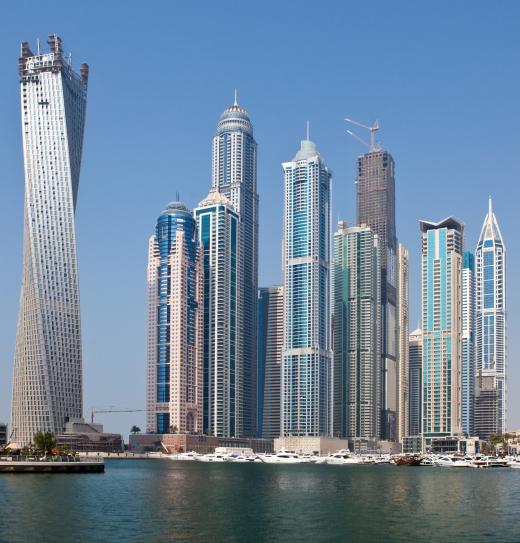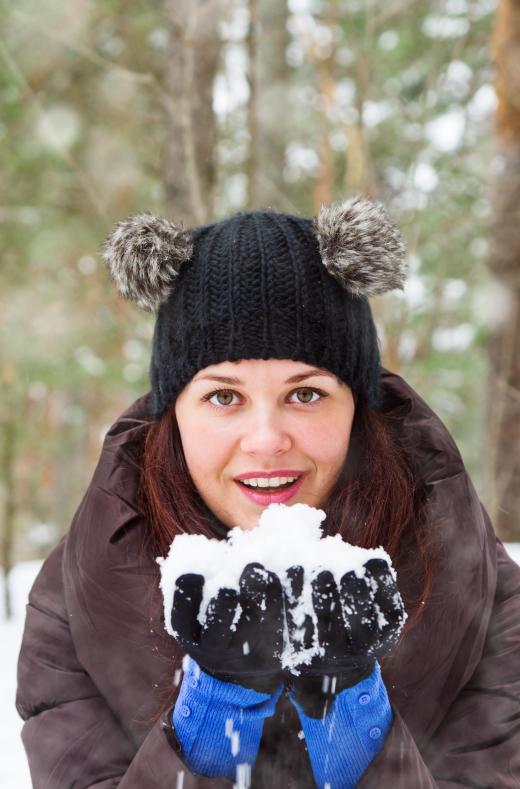How is Artificial Snow Made?
 Michael Anissimov
Michael Anissimov
A number of tourist-oriented cities in temperate or hot areas contain large, insulated buildings filled with artificial snow for people to ski on. These artificial snow slopes can be found in Germany, Japan, and even some Middle Eastern countries, such as Dubai, in the United Arab Emirates. These structures produce realistic looking and feeling snow for snowboarding and skiing year-round. Artificial snow is also produced in the entertainment industry for use as a prop or backdrop.
How is it possible to produce artificial snow? Several components are necessary. First, the wall of the structure containing the snow must be insulated extremely well. Double-skinned insulated walls are commonly used. In some artificial snow slopes, the insulation is so good that it would take weeks for the snow to melt, even if all cooling systems were turned off.

Snow is created at the roof of the building where "snow guns" use compressed air to fire tiny ice pellets (10 micron diameter) into a cloud of atomised liquid water. Giant refrigeration systems reduce the overall temperature of the interior to -8°C (17.6°F). Sometimes other seed materials besides ice pellets are used, such as magnesium ions, calcium, or clay particles or organics. Any small impurities will work, to a certain extent. The seed material that makes the most realistic looking artificial snow is a freeze-dried protein powder derived from the bacteria Pseudomonas syringae called Snomax®, but ice pellets are used most frequently.

As the seed particles travel through the water vapor and down towards the floor, they accumulate snow crystals and turn into artificial snow. The idea is for all the particles to freeze before they hit the ground. Underneath the floor, systems using glycol and liquid ammonia cool the floor further, creating an ideal padding of artificial snow that closely simulates natural conditions.
AS FEATURED ON:
AS FEATURED ON:












Discussion Comments
Can you please give me some idea of how much water is required to make say a meter cube of snow.
Post your comments